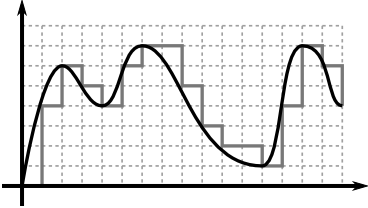

Here command can be any valid Unix command, or even a user-defined function, and signal can be a list of any number of signals you want to trap. Trapping these signals is quite easy, and the trap command has the following syntax − For instance, you may end up leaving a bunch of temporary files that won't get cleaned up. When you press the Ctrl+C or Break key at your terminal during execution of a shell program, normally that program is immediately terminated, and your command prompt returns. This kills the process running with process ID 1001.

To send a kill signal to the same process, use the following command − The above command sends the HUP or hang-up signal to the program that is running with process ID 1001. Here signal is either the number or name of the signal to deliver and pid is the process ID that the signal should be sent to. The other common method for delivering signals is to use the kill command, the syntax of which is as follows − When you press the Ctrl+C key, a SIGINT is sent to the script and as per defined default action script terminates. One of the most common is for a user to type CONTROL-C or the INTERRUPT key while a script is executing. There are several methods of delivering signals to a program or script. This creates a file called core containing the memory image of the process when it received the signal. Some of the possible default actions are −ĭump core. The default action for a signal is the action that a script or program performs when it receives a signal. Default ActionsĮvery signal has a default action associated with it. The actual list of signals varies between Solaris, HP-UX, and Linux. Just issue the kill -l command and it would display all the supported signals −ĥ) SIGTRAP 6) SIGABRT 7) SIGBUS 8) SIGFPEĩ) SIGKILL 10) SIGUSR1 11) SIGSEGV 12) SIGUSR2ġ3) SIGPIPE 14) SIGALRM 15) SIGTERM 16) SIGSTKFLTġ7) SIGCHLD 18) SIGCONT 19) SIGSTOP 20) SIGTSTPĢ1) SIGTTIN 22) SIGTTOU 23) SIGURG 24) SIGXCPUĢ5) SIGXFSZ 26) SIGVTALRM 27) SIGPROF 28) SIGWINCHĢ9) SIGIO 30) SIGPWR 31) SIGSYS 34) SIGRTMINģ5) SIGRTMIN+1 36) SIGRTMIN+2 37) SIGRTMIN+3 38) SIGRTMIN+4ģ9) SIGRTMIN+5 40) SIGRTMIN+6 41) SIGRTMIN+7 42) SIGRTMIN+8Ĥ3) SIGRTMIN+9 44) SIGRTMIN+10 45) SIGRTMIN+11 46) SIGRTMIN+12Ĥ7) SIGRTMIN+13 48) SIGRTMIN+14 49) SIGRTMIN+15 50) SIGRTMAX-14ĥ1) SIGRTMAX-13 52) SIGRTMAX-12 53) SIGRTMAX-11 54) SIGRTMAX-10ĥ5) SIGRTMAX-9 56) SIGRTMAX-8 57) SIGRTMAX-7 58) SIGRTMAX-6ĥ9) SIGRTMAX-5 60) SIGRTMAX-4 61) SIGRTMAX-3 62) SIGRTMAX-2

There is an easy way to list down all the signals supported by your system.
#Signal definition software
Software termination signal (sent by kill by default) If a process gets this signal it must quit immediately and will not perform any clean-up operations Issued if an illegal mathematical operation is attempted Issued if the user sends a quit signal (Ctrl + D) Issued if the user sends an interrupt signal (Ctrl + C) Hang up detected on controlling terminal or death of controlling process The following table lists out common signals you might encounter and want to use in your programs − Signal Name Some signals, such as the interrupt signal, indicate that a user has asked the program to do something that is not in the usual flow of control. The events can vary from user requests to illegal memory access errors. Signals are software interrupts sent to a program to indicate that an important event has occurred. In this chapter, we will discuss in detail about Signals and Traps in Unix.


 0 kommentar(er)
0 kommentar(er)
